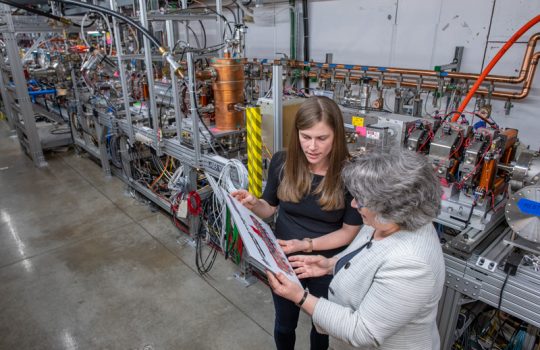Particle accelerator magnet sets record using high-temperature superconductor
Large, powerful magnets are a vital component of particle accelerators. The general rule is, the stronger the magnetic field, the better. For many particle accelerator applications, it is as important how fast a magnet can reach its peak strength and then ramp down again. A team at Fermilab now has achieved the world’s fastest ramping rates for accelerator magnets using high-temperature superconductors.


